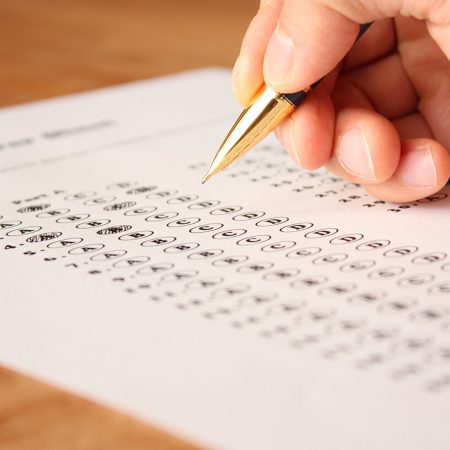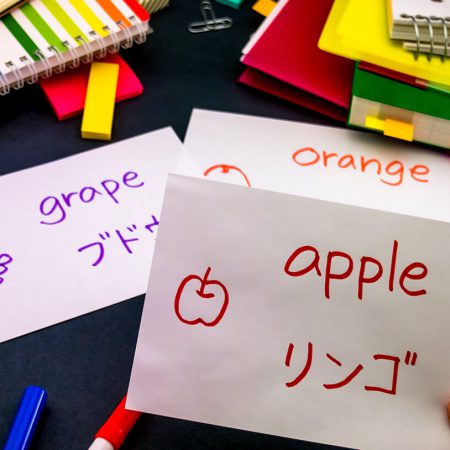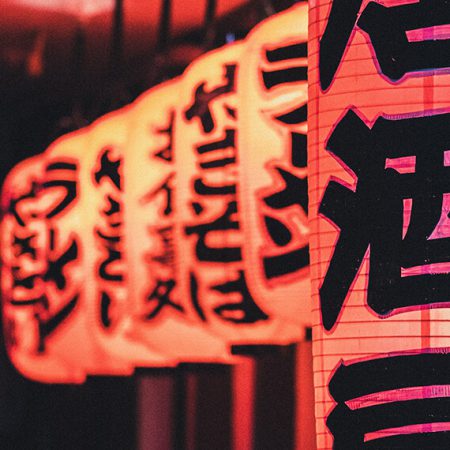How did I study Japanese? Part 4 of 5

Within 2 weeks of my mandatory Japanese college class, I’d already mastered reading and writing the hiragana and katakana writing systems. These were just the preliminary lessons, but were necessary tools for the later and more complex classes. By the time my instructor discussed grammar, I was ready to take on the language rules of these syllabaries. Naturally, the next step was to form words and sentences! Read on to learn how I went about basic Japanese grammar points as a total beginner.
Table of contents
How I Studied Japanese: Part 4 of 5 – Basic Grammar

Photo by Zoe Zachary on Flickr
I’ve mentioned before that the Japanese language is easier and much more straightforward than English when it comes to reading. I still stand by this claim when it comes to grammar. Japanese uses special language markers called “particles” that we attach to words to form sentences. These particles seemed like the backbone of the Japanese grammatical structures to me, so I made sure to remember them well.
Like I’ve said before, a lot of memorization was involved when I started learning Japanese. I expected as much since it had its own words and structures. Perhaps being multilingual from the beginning was an advantage, so I had an idea about code switching. This is like changing language input methods on a computer! Basically, instead of obsessing over direct translations of words, I focused on understanding how to express thoughts or communicate in Japanese.
My Japanese language instructor had a pretty straightforward teaching method as well. We had 2 classes a week, with a meeting dedicated to discussions and the other session for a quiz. Each lesson came with a set of vocabulary words appropriate for the basic grammar points of the current lesson. Here’s a general look into how I got used to the Japanese grammar structure:
I Memorized Vocabulary

I had to memorize the vocabulary words before anything else. Apart from particles, these were necessary building blocks to craft actual sentences. Since I already knew how to read and write hiragana and katakana, I scribbled these words down everywhere from my notebook to scrap pieces. I remembered them in no time!
The basic vocabulary words in the 1st formal lesson included pronouns like watashi (わたし; EN: I, me) and anata (あなた; EN: you), and every day verbs like tabemasu (たべます; EN: eat) and nomimasu (のみます; EN: drink). There were about 25 of these words to memorize. That seemed like a lot to take in for one lesson, but I practiced writing them in the order they were written in my book to remember better.
Also, I memorized the words much better when I thought about what the Japanese words signified instead of settling with their English equivalents. Think of a cat, but not the word “cat.” That image of a cat in your head is what the word “cat” signifies or represents. Once I shifted my mindset to Japanese mode, I just associate the Japanese word neko (ねこ) with the same image I see when I think of the word “cat.” I did this for the vocabulary words and I got them all figured out in no time!
I Practiced Particles With My Classmates

Since I was already equipped with vocabulary words, I had to learn how to connect those words together to form real Japanese sentences! This was where particles came in the picture. In class, we started out with 5 basic particles: wa (は; this represents a “ha” sound, but as a particle, it’s pronounced as “wa”); ga (が); o (を; similarly, this “wo” symbol is pronounced as “o” as a particle); ni (に); and de (で). Individually, these particles have no standalone definitions, but attaching them to words make all the difference in a phrase or sentence!
Note: I’ve inserted spaces in-between the parts of the following sentences to avoid using kanji. That’s how they were written in my workbook, so I hope this helps somehow.
は
We attach this particle to the subject or topic of the sentence.
Examples:
マライア・キャリーは すごいです。
Mariah Carey is amazing.
きょうは あめが ふります。
It will rain today.
が
We attach this particle to objects that modify the subjects of the sentence. It’s also used to denote the subject of an interrogative sentence.
Examples:
マライア・キャリーは こえが すばらしい。
Mariah Carey has a wonderful voice.
にほんごが わかりません。
I don’t understand Japanese.
を
We attach this particle to objects as well, in the sense that the word before を is what the subject [verb]s.
Examples:
ぼくは キャビアを たべます。
I eat caviar.
わたしは シャンパンを のみます。
I drink champagne.
に
We attach this particle to denote time, destination, and location of verbs.
Examples:
ごじに おきます。
I get up at 5AM.
うちに かえります。
I’m going home.
いりょうキットに フェイスマスクが あります。
There are facemasks in the first-aid kit.
で
We attach this particle to places of action or means of doing an action.
Examples:
うちで ばんごはんを たべます。
I have dinner at home.
じてんしゃで いきます。
I will go by bike.
These particles may seem challenging at first, but it’s just a handful! I also struggled a bit in the beginning, but luckily, I had friends who had a better grasp of the language and got to explain particles in our shared mother tongue. I got to practice speaking these basic phrases with them and went back and forth with the basic vocabulary and grammar structures we learned in class. Later on, the concepts just clicked and I rarely had to rely on the English or mother tongue translations.
The more I went over these particles and sample sentences, Japanese just started making sense in my head! I was pleased to learn that Japanese structure is fixed. As long as I knew how these particles functioned, I could mix and match the sentence structure however I wanted, while making sure that the right particles were attached to the right words. This was a pretty convenient tip and I hope it helps ease any worries you might have about the Japanese language.
I Watched Anime and Japanese Drama Series

By now, you already know I like to incorporate things I enjoy when I study. Of course, I watched Pokémon episodes in Japanese and I convinced myself that I was studying. Pokémon is a kid’s TV program, so on the one hand, I inevitably came across some fictional words and names. On the other hand, I recognized some basic grammar structures, which was pleasantly surprising. I was actually absorbing knowledge from my lessons!
Before learning any Japanese, I’d relied solely on English subtitles to understand what the characters in Japanese shows were saying. Now that I have some basic grammar under my belt, I can definitely say that my attention span has increased! I listen much more intently to what the characters say. And since I can read Japanese, I can even sing along to the opening and ending theme songs more accurately.
I also watched other anime and Japanese drama series in my spare time. When I heard dialogue that I understood without having to pause and read subtitles, I felt so fulfilled and resolved to get to a point where I could turn off the subtitles in my shows. All I’d have to do is move past the basics and get on with more advanced lessons!
Conclusion
I took time before getting the hang of the Japanese grammar system. My initial approach was to find direct English translations of words. This proved challenging until I resolved to simply understand that Japanese is another language with its own rules. As long as I know what words are used to represent the same concepts in another language, then I’m on the right track!
I am confident enough to say that I’ve mastered hiragana and katakana, but I also understand that there’s an unlimited amount of Japanese knowledge to uncover. Learning the language could take a lifetime! Basic grammar may just be a simple step in the thick of things, but it’s an essential one. Take the necessary knowledge from the basic Japanese grammatical rules as your tools for honing your overall language skills. If you take things step by step and allow yourself to learn at your own pace as I did, you’ll start forming sensible and more intricate Japanese sentences for sure. Good luck!
Motto Japan, the community platform to support foreigners with the foundation for life in Japan, including Japanese study, job opportunities, and housing service. Motto Japan Media will provide a wide variety of information for Japanese fans all over the world, to create a cross-cultural environment and enrich the life of foreign residents in Japan!













Leave a Reply